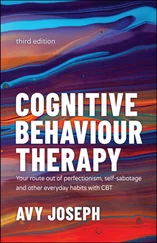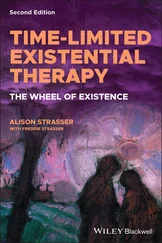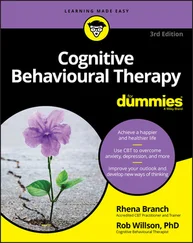1 ...7 8 9 11 12 13 ...27
CAT Has Applications In Many Clinical and Other Settings
Overall, CAT by now offers, in our view, a robust, comprehensive framework within which various helpful clinical treatments may be offered, and which also offers a means of re‐conceptualizing many challenging problems (e.g., dementia, the “difficult” patient, “personality disorder,” psychosomatic disorders, psychosis, and so forth; see Chapters 2and 9). We note that, inevitably, further major conceptual and clinical challenges exist for CAT, as for any other current model, some of which are addressed elsewhere in the book. This book is primarily addressed to those in training or already working therapeutically with psychologically distressed or disturbed individuals, but also to those colleagues who, while not “doing therapy,” have important clinical and other (e.g., managerial, judicial) responsibilities. We believe that psychological and relational understandings should play a larger part than is now the case throughout health services, such as the NHS, and beyond. This would include management of groups such as psychiatric patients with major mental disorders, forensic patients, the “mentally handicapped” or “intellectually disabled,” and also, for example, in schools and in other social settings (see Chapter 9). We believe that psychotherapists should ideally play a central role in supporting and training staff in these fields. In all these fields experience is accumulating of applying CAT, and the model appears to be accessible and useful to many patients and clinical staff (see Chapters 9and 11). While both psychodynamic therapies and cognitive therapy have contributed historically to these fields, neither, in our view, adequately conceptualizes or mobilizes the therapeutic power of the relationship between patients and those looking after them in a way that is clear, structured, and, above all, clinically helpful. Importantly, CAT also appears to offer an effective, relationally underpinned, structured, and containing framework within which health professionals frequently feel empowered and “liberated” to enact, properly and safely, the care and compassion that most bring to their work. For many this may be repressed and disallowed in many present day, commodified, and highly defensive health care systems (see Lees, 2016; Lowenthal, 2015). Nonetheless, these qualities are recognized to lie at the core of any effective health (or social) care (see Youngson, 2012). We believe that CAT has a major generic contribution to make in these areas, offering a distinct, coherent, and teachable model of social and interpersonal development, interaction, and well‐being that can enable individuals, staff groups, and services to respond helpfully, rather than react collusively, to their patients, and which may also have important applications outside clinical practice (see Chapters 9and 11).
2
The Main Features of CAT
Summary
Cognitive Analytic Theory (CAT) theory focuses principally on the way in which early relational, including socio‐cultural, experience is internalized in the developing Self as a repertoire of (“formative”) reciprocal roles ( RRs ) and the emergence of “responsive,” “coping” patterns or reciprocal role procedures ( RRPs ). These are also understood to incorporate internalized values and beliefs. Theory also addresses the ways in which this possibly damaged repertoire of RRs and RRPs is enacted and repeated in current relationships, in self‐management, in problematic symptoms, and on the ways in which they may prevent revision of dysfunctional or unfulfilling ways of living. More severe and complex developmental damage may result in a tendency to dissociation and fragmentation of the Self into disconnected Self‐states, with loss of Self‐reflective capacity and enactment of frequently extreme and desperate RRPs. Successful therapeutic change is understood in terms of change to these deep structures and processes, and subsequently to socio‐relational context. This body of theory has evolved from the earlier Procedural Sequence Object Relations Model PSORM . This was modified by the introduction of Vygotskian and Bakhtinian ideas on the social and dialogical formation of mind and the Self, although it remains the foundation of CAT. The practice of CAT is based, for good theoretical reasons, on a collaborative and empathic therapeutic position. The therapist adopts a whole‐person, “transdiagnostic” approach aiming firstly to acknowledge and validate a patient's presenting problems and story. The therapist aims to make joint sense of these with the patient, and to create, as quickly as possible, a jointly agreed provisional narrative and diagrammatic reformulations (as a letter and a “map”) of their story and of their difficulties. These will aim to describe, non‐judgmentally, apparent historic relational origins of RRs, of subsequent, often dysfunctional and symptomatic, RRPs, and the ways in which these may be played out currently, including importantly within the therapy relationship. Therapy subsequently involves describing and helping to revise and change these key RRs and RRPs (seen as “target problem procedures” or “key issues”), and, if helpful, resultant presenting problems (“target problems”), and to help create more fulfilling alternative or modified RRs and RRPs (“exits” or “aims”). Therapy will also aim at gradually making joint sense of, or “working through”, both historic issues and current difficulties in living. This later period of therapy may involve use of complementary techniques such as “no‐send” letters, behavioral experiments, “empty chair” work, art or music therapy, or more formal trauma processing work. All of these activities would be undertaken, however, in the context of prior reformulations. Therapy will also aim from the beginning to pick up ways in which the therapist will, inevitably, be implicated in (reciprocate) the frequently distressed or desperate enactments of a patient's RR repertoire, and how this may lead to misunderstandings or ruptures. A key task of therapy is to address and resolve these, assisted by the jointly agreed “map” and letter. Importantly, the therapy relationship aims to offer a new experience (a new “situational” RR) of being listened to non‐judgmentally, contained, and empowered, rather than colluded with or against. This experience is understood to be gradually internalized and healing in itself. For more damaged and distressed patients, this aspect of individual therapy may be important over a longer period. It may also be helpfully complemented or consolidated, depending on context, by other approaches such as group or social therapy. Focus throughout, however, is maintained on time limitation and “ending well.” This is marked by the exchange of summary “goodbye” letters that reflect on therapy and the future from the perspective of both patient and therapist. Therapy would always be undertaken in the supportive context of, at least, peer supervision given the ever‐present likelihood of unwitting collusion with the patient's relational repertoire, and the inevitable risks of professional stress and “burn out.” CAT‐based approaches are also being used increasingly to address problematic systemic, organizational, and indeed socio‐political dynamics arising both in clinical settings and beyond .
This chapter will offer an overview and definitions of the key theoretical concepts of CAT and of the key features of CAT as a model of therapy. We will offer a summary of the historical development of CAT in so far as this is relevant to an understanding and appreciation of the current CAT model. This will include some consideration of other models from which, and alongside which, it has evolved and with which it continues to share certain commonalities (see e.g., Young, Klosko, & Weishaar, 2003; Bateman & Fonagy, 2012; Hayes, Kirk, Strosahl, & Wilson, 2012; Meares, 2012; Leichsenring & Leibung, 2010; and see overviews in Yakeley, Johnstone, Adshead, & Allison, 2016). We shall illustrate the use of CAT with a brief case history, while others will be included later in the book to illustrate different aspects of practice. These will include the extension of CAT into more contextual and systemic settings, group work, and reflective practice. The focus will be principally on individual psychotherapy, given that this is where the initial and most current work has been and is undertaken. Given the evolution of CAT into a, by now widely accepted, “stand‐alone” model of development, disorder, and therapy, fewer references to the origins and development of CAT and fewer comparisons with other models will appear in the text than was the case in the first edition of this book. Much about CAT has, however, remained constant, including the aim of providing effective, evidence‐based practice to those in need, following the original principles of the National Health Service in the UK, and a recognition of the constraints of publicly funded services. This remains the case notwithstanding the deeply regrettable and increasing commercialization and commodification of health care in recent years in the UK and in many other countries. Although CAT was not defined and named as a separate model until the mid‐1980s, it was derived from practice and research carried out over several previous decades. As this pre‐history explains many of its current features, this chapter will begin by summarizing these sources. These sections may, however, be reasonably skimmed over by those less interested in, or preoccupied by, more detailed aspects of the development of its underlying theory. Further historical and summary accounts of CAT are given by, for example, Denman (2001); Dunn (2002); Kerr (2005); Kerr and Ryle (2006); Ryle and Low (2013); Ryle, Kellett, Hepple, and Calvert (2014); Kerr, Hepple, and Blunden (2016); McCormick (2017); Corbridge, Laura Brummer, and Coid (2017); and Potter (2020).
Читать дальше












